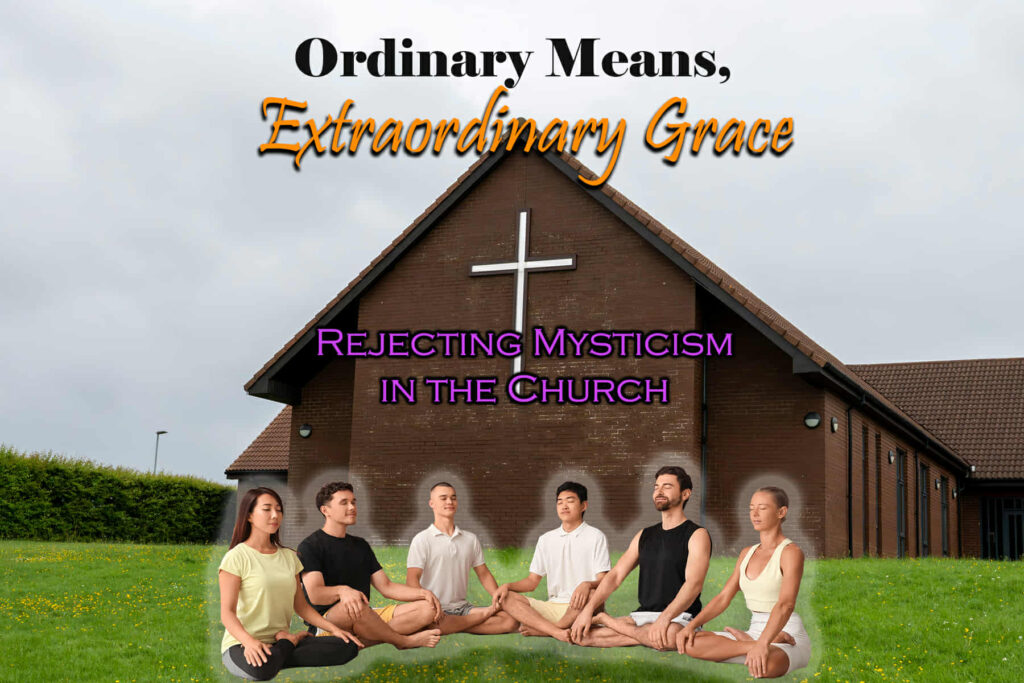⏱️ Estimated Reading Time: 3 min read
10 Signs of Contemplative Influence in Your Church
By Dave Jenkins
Fall 2025 | Theology for Life
Contemplative spirituality often sneaks into churches quietly. It may be packaged as “deeper spirituality”, “soul care”, or “ancient practices”, but at its root, it shifts authority from God’s sufficient Word to subjective experience. If left unchecked, it will reshape how God’s people approach Scripture, prayer, and worship. Here are ten signs your church may be influenced by contemplative trends.
One: Scripture Takes a Back Seat to Experience
Preaching and teaching begin to emphasize “what you feel” over “what God says.” Sermons drift toward storytelling, journaling, or silence instead of careful exposition of God’s Word.
Two: Practices Rooted in Mysticism are Introduced
Words like centering prayer, breath prayers, Lectio Divina (used as a mystical tool), or labyrinth walks are recommended as ways to “experience God” beyond Scripture.
Three: Silence and Solitude are Treated as Sacraments
Instead of seeing prayer as speaking to God according to His Word, silence itself becomes the “means of grace.” The emphasis shifts from truth-filled communion to emptying the mind.
Four: Emotional Impressions are Equated with Revelation
Phrases like “God told me” or “I felt God say” begin replacing “the Bible says.” The line between Scripture and personal impression grows blurry.
Five: Popular Contemplative Authors are Quoted Favorably
Books and teachers such as Richard Foster, Dallas Willard, John Mark Comer, Henri Nouwen, Brennan Manning, or Sarah Young are held up as models of discipleship.
Six: Biblical Meditation is Replaced by Mystical Techniques
Instead of filling the mind with Scripture (Psalm 1:2), people are taught to empty the mind through mantras, repetitive phrases, or breathing exercises borrowed from Catholic mystics or Eastern practices.
Seven: The Gospel Becomes Therapeutic
Sin, repentance, and justification by faith alone fade into the background, replaced by messages of inner peace, healing, and wholeness through “spiritual practices.”
Eight: Corporate Worship is Minimized
Private spirituality, inner experience, and personal journaling are elevated above the gathered worship of God’s people, where His Word is preached and His sacraments observed.
Nine: Discernment is Labeled as Judgmental
When warnings are raised against mysticism or unbiblical practices, discernment is dismissed as unloving or legalistic. Criticism of mystical authors is frowned upon.
Ten: The Sufficiency of Scripture is Subtly Denied
Leaders may affirm biblical authority in theory, but in practice Scripture is treated as incomplete, needing to be supplemented with feelings, experiences, or ancient practices to achieve true intimacy with God.
Conclusion: Guard the Flock
The Apostle Paul warned the Colossians against those who promoted visions, asceticism, and man made regulations (Colossians 2:18–23). The danger is the same today. Contemplative spirituality does not bring us closer to Christ; it moves us away from the sufficiency of His Word.
Churches must recover confidence in the ordinary means of grace: the preaching of the Word, prayer rooted in Scripture, the sacraments rightly administered, and fellowship with the saints. These may not seem novel or exciting, but they are God’s appointed path for His people. So, dear Christian, test everything by the Word of God. Cling to what is good. Remember: Christ is enough, and His Word is sufficient.
This article appears in the Fall 2025 Issue of Theology for Life Magazine, exploring “The Means of Grace.”

Ordinary Means, Extraordinary Grace: Rejecting Mysticism in the Church
Dave Jenkins is happily married to his wife, Sarah. He is a writer, editor, and speaker living in beautiful Southern Oregon. Dave is a lover of Christ, His people, the Church, and sound theology. He serves as the Executive Director of Servants of Grace Ministries, the Executive Editor of Theology for Life Magazine, the Host and Producer of Equipping You in Grace Podcast, and is a contributor to and producer of Contending for the Word. He is the author of The Word Explored: The Problem of Biblical Illiteracy and What To Do About It (House to House, 2021), The Word Matters: Defending Biblical Authority Against the Spirit of the Age (G3 Press, 2022), and Contentment: The Journey of a Lifetime (Theology for Life, 2024). You can find him on Facebook, Twitter, Instagram, Youtube, or read his newsletter. Dave loves to spend time with his wife, going to movies, eating at a nice restaurant, or going out for a round of golf with a good friend. He is also a voracious reader, in particular of Reformed theology, and the Puritans. You will often find him when he’s not busy with ministry reading a pile of the latest books from a wide variety of Christian publishers. Dave received his M.A.R. and M.Div through Liberty Baptist Theological Seminary.




